A Day at Patara Elephant Farm
 Sign at Patara Entrance
Sign at Patara Entrance  Moms and Baby elephants
Moms and Baby elephants  An elephant's hug
An elephant's hug The last mom and baby stood far away from the gazebo, and this mom was eating sugarcane. Gao told us that we could eat some of her sugarcane, but mom and I were the only ones out of our group who decided to. I did not like the taste of it too much, mostly because it was covered with mud on one side. The elephants did not mind though. This baby was even more playful than the last one. She charged almost everyone she saw, and I had to run away really fast to avoid being knocked over by her. She pulled on my mom’s scarf and tried to teethe on it. I did something that I kind of regret now, but the mahouts asked me to ride on the baby elephant, so I did. I don’t think it hurt her, because I’m only about 31 kg (68 lb), and this elephant was about 150 kg (330 lb). And she might have thought I was just playing with her. It was only for a few seconds, but it was an experience that I will never forget.
 Elephant drinking
Elephant drinking While Pat was talking, we saw two elephants on a little hill about 10 feet away. The younger elephant had her head stuck in a tree, and the older one looked at the younger one disapprovingly. Pat told us that the old one was the younger one’s grandmother. He also said when an elephant loses its mom, another female will come in and adopt the young elephant.
Then we were given Karen mahout ponchos to wear, and we headed down to meet our elephants.
Gao told us the first thing we had to do when approaching our elephant was give them food. He said if you give them food, they will be your friend your whole life. He asked my mom to demonstrate on her elephant, which was a huge, pregnant female named Mae Khwan. He taught us commands in the Karen language to give to the elephant when feeding. “Boun,” means “open your mouth.” You have to say this very sternly and say the elephants name afterward. “Dee dee,” means “good job,” and you pat them on their head to reward them. When you want the elephant to go forward, you hold their ears and say “Ma,” and tug. The elephant will go where you want it to.
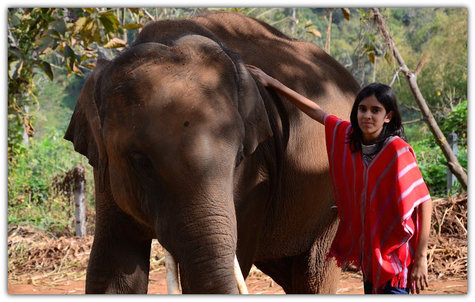 My friend named Puh
My friend named Puh For the next part of the health check up we had to look at the elephant’s eyes. Elephants often look as if they are crying, but they have no tear ducts whatsoever, and their eyes only produce liquid to clean out dirt. But if you see an elephant with one eye more runny than the other, that means that it probably has an infection. But luckily none of the elephants here had any eye problems. The next thing you need to check is the elephant’s sweat. Elephants, like dogs, pant to reduce body temperature, but there is one place on an elephant's body where they do sweat. Above their toenails. We had to check for sweat above our elephant’s toenails. Puh's were very sweaty, which meant he was healthy.
 Smelling the elephant poo
Smelling the elephant poo  Brushing Puh
Brushing Puh Our lunch was very nice. When we got back to the gazebo, there was a huge banana leaf covering something on the table. Whatever it was, it smelled amazing. When Gao pulled off the banana leaf, on the table lay fried chicken, grilled pork, about a jillion types of fruit, sticky rice, and Thai donuts. Even the cats who walked around thought it was good. They kept begging for some of the meat that was lying on the table.
Gao told us there were three ways to get on an elephant. For the first way, the elephant raises one foot slightly, you put one foot on the elephant’s foot, the other on the elephant’s leg, you hoist yourself atop the elephant back, and then you scoot up to the neck. This is what I did. The second way is for the elephant to lie down completely, and you get on to the back from there. The third way is the elephant brings his head down, and you step lightly on the upper trunk, and when the elephant lifts its head up, you scoot up to the neck. My mom did it this way, but she got stuck on the way up. My mom was suspended on Mae Khwan’s forehead. She eventually got on the neck, but she was facing backwards, and struggled the whole way around to face forward. When she did, everyone cheered.
 Riding Puh in the jungle
Riding Puh in the jungle 
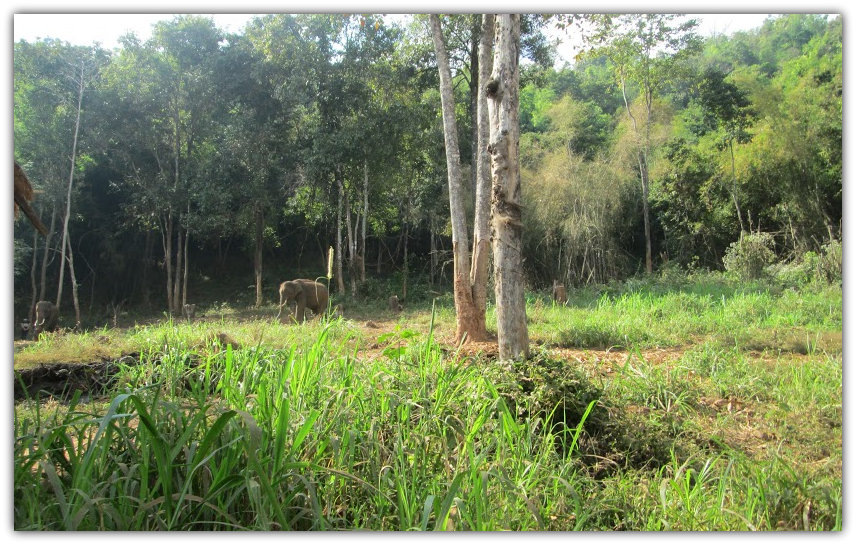

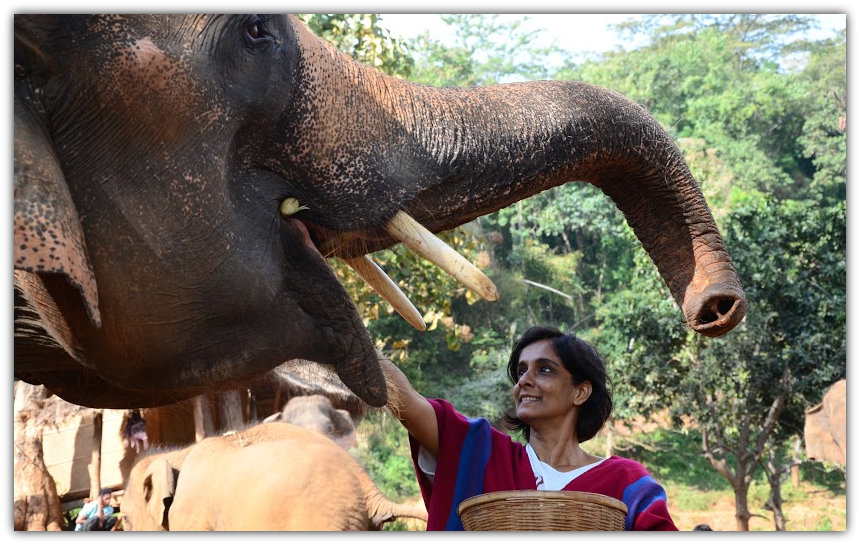






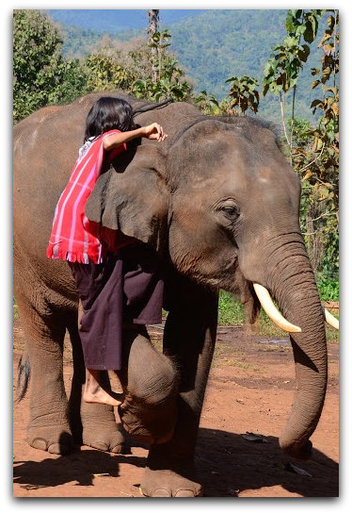

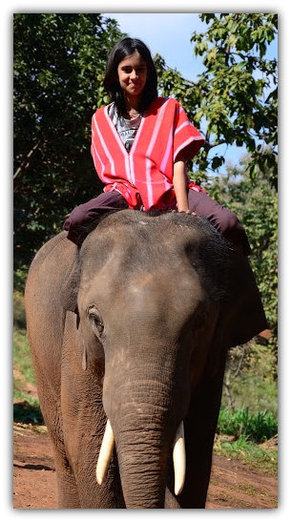





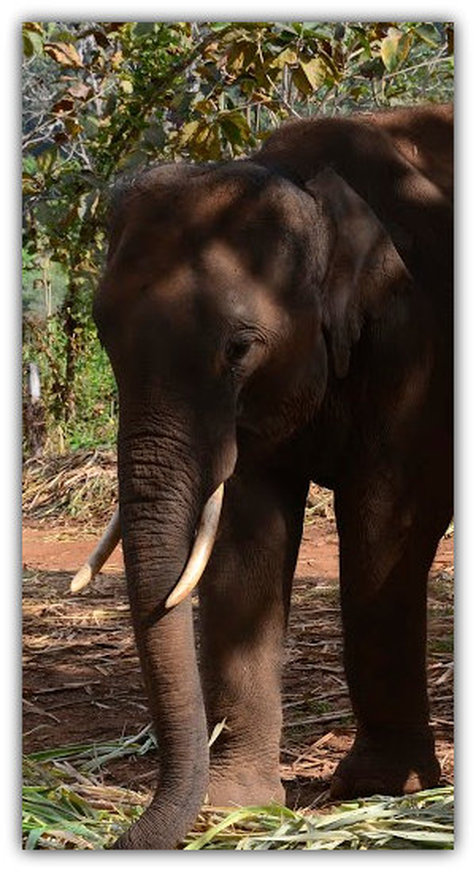
 RSS Feed
RSS Feed


